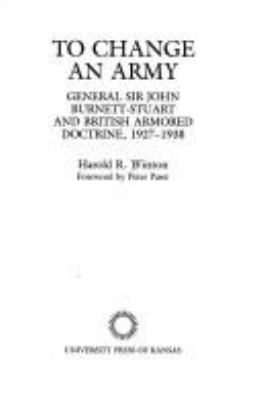
Book
|
To change an army : General Sir John Burnett-Stuart and British armored doctrine, 1927-1938
Copies
21 Total copies, 21 Copies are in,
0 Copies are out.
Title
To change an army : General Sir John Burnett-Stuart and British armored doctrine, 1927-1938
Call No
U43.G7
Authors
Subjects
Burnett-Stuart, John, Sir.
Burnett-Stuart, John swd
Burnett-Stuart, John Theodosius, 1875-1958.
Burnett-Stuart, John, Sir.
Burnett-Stuart, John,Sir.
Burnett-Stuart, John, Sir. (DLC)n 87883326
Military art and science--Great Britain--History--20th century.
Tank warfare--History.
Militärdoktrin
Geschichte (1927-1938)
Tank warfare--History.
Military art and science--History--GREAT BRITAIN--20TH CENTURY.
Großbritannien
Burnett-Stuart, John swd
Burnett-Stuart, John Theodosius, 1875-1958.
Burnett-Stuart, John, Sir.
Burnett-Stuart, John,Sir.
Burnett-Stuart, John, Sir. (DLC)n 87883326
Military art and science--Great Britain--History--20th century.
Tank warfare--History.
Militärdoktrin
Geschichte (1927-1938)
Tank warfare--History.
Military art and science--History--GREAT BRITAIN--20TH CENTURY.
Großbritannien
Language
English
Published
Lawrence, Kan. : University Press of Kansas, ©1988.
Publication Desc
xviii, 284 p. : ill., ports. ;
ISBN
0700603565
(alk. paper)
LCCN
87025579
Dimensions
24 cm.









